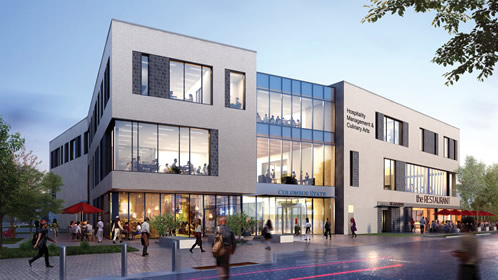Columbus State Breaks Ground for New Culinary Arts Center
A new culinary arts center is in the works at Columbus State Community College in Columbus, OH. The new Mitchell Hall development will serve as a gateway to the college and as an innovative space for students studying hospitality and culinary arts.
The 80,000-square-foot building will feature several teaching kitchens, a functional bakery, spaces for dining and socializing, gardens, classrooms, and a large multipurpose outdoor space. Mitchell Hall is being designed as a space to foster collaboration and socialization among students, and as a space that will work to address issues like nutrition and food insecurity within the community.

Ground was broken for the facility in late June 2018. The building will be completed sometime in 2019 with an overall cost of $33 million.